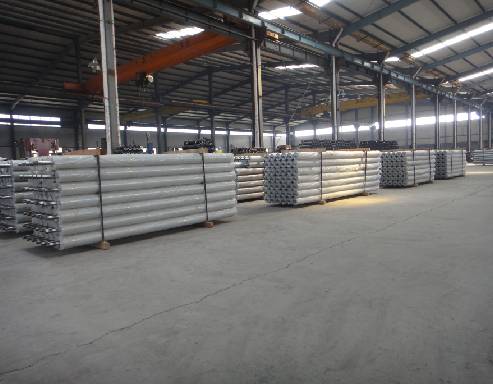 Afrikaans
Afrikaans  Albanian
Albanian  Amharic
Amharic  Arabic
Arabic  Armenian
Armenian  Azerbaijani
Azerbaijani  Basque
Basque  Belarusian
Belarusian  Bengali
Bengali  Bosnian
Bosnian  Bulgarian
Bulgarian  Catalan
Catalan  Cebuano
Cebuano  Corsican
Corsican  Croatian
Croatian  Czech
Czech  Danish
Danish  Dutch
Dutch  English
English  Esperanto
Esperanto  Estonian
Estonian  Finnish
Finnish  French
French  Frisian
Frisian  Galician
Galician  Georgian
Georgian  German
German  Greek
Greek  Gujarati
Gujarati  Haitian Creole
Haitian Creole  hausa
hausa  hawaiian
hawaiian  Hebrew
Hebrew  Hindi
Hindi  Miao
Miao  Hungarian
Hungarian  Icelandic
Icelandic  igbo
igbo  Indonesian
Indonesian  irish
irish  Italian
Italian  Japanese
Japanese  Javanese
Javanese  Kannada
Kannada  kazakh
kazakh  Khmer
Khmer  Rwandese
Rwandese  Korean
Korean  Kurdish
Kurdish  Kyrgyz
Kyrgyz  Lao
Lao  Latin
Latin  Latvian
Latvian  Lithuanian
Lithuanian  Luxembourgish
Luxembourgish  Macedonian
Macedonian  Malgashi
Malgashi  Malay
Malay  Malayalam
Malayalam  Maltese
Maltese  Maori
Maori  Marathi
Marathi  Mongolian
Mongolian  Myanmar
Myanmar  Nepali
Nepali  Norwegian
Norwegian  Norwegian
Norwegian  Occitan
Occitan  Pashto
Pashto  Persian
Persian  Polish
Polish  Portuguese
Portuguese  Punjabi
Punjabi  Romanian
Romanian  Russian
Russian  Samoan
Samoan  Scottish Gaelic
Scottish Gaelic  Serbian
Serbian  Sesotho
Sesotho  Shona
Shona  Sindhi
Sindhi  Sinhala
Sinhala  Slovak
Slovak  Slovenian
Slovenian  Somali
Somali  Spanish
Spanish  Sundanese
Sundanese  Swahili
Swahili  Swedish
Swedish  Tagalog
Tagalog  Tajik
Tajik  Tamil
Tamil  Tatar
Tatar  Telugu
Telugu  Thai
Thai  Turkish
Turkish  Turkmen
Turkmen  Ukrainian
Ukrainian  Urdu
Urdu  Uighur
Uighur  Uzbek
Uzbek  Vietnamese
Vietnamese  Welsh
Welsh  Bantu
Bantu  Yiddish
Yiddish  Yoruba
Yoruba  Zulu
Zulu High-Quality Pulley Lagging Solutions for Enhanced Performance
Understanding Pulley Lagging Importance and Maintenance
Pulley lagging is an essential component in the maintenance and functionality of various industrial operations, particularly in conveyor systems. It involves applying a resilient material to the surface of a pulley to enhance traction and protect the pulley from wear. This practice is critical in applications where the movement of materials is constant and can place significant strain on the machinery.
The primary purpose of pulley lagging is to increase the coefficient of friction between the pulley and the conveyor belt. This improved grip helps prevent slippage, especially in scenarios where the conveyor is inclined or when it operates under heavy load conditions. The use of lagging not only enhances the efficiency of the system by ensuring smoother operations, but it also extends the life of the belt and the pulley itself by reducing wear and tear.
There are various types of lagging materials available, each with its specific properties tailored for different applications. Common materials include rubber, ceramic, and polyurethane. Rubber lagging is often used due to its durability and good grip, while ceramic lagging can be beneficial in high-friction environments, providing excellent wear resistance. The choice of material largely depends on the specific use case, environmental conditions, and the type of cargo being transported.
pulley lagging

Maintenance of pulley lagging is crucial to ensure optimal performance. Regular inspections should be conducted to identify any signs of wear or damage. If the lagging material becomes worn down, it can lead to increased slippage and efficiency losses, necessitating timely replacements. Additionally, over time, dirt and debris can accumulate on the pulley surface, further reducing traction. Cleaning the pulleys and maintaining the lagging can significantly enhance operational efficiency and reduce the risk of unexpected downtimes.
Another important aspect of pulley lagging is its role in safety. Properly lagged pulleys can significantly reduce the chances of mechanical failures that could pose risks to workers and machinery. By minimizing slippage and ensuring the reliability of material movement, lagging contributes to a safer working environment.
In conclusion, pulley lagging is a vital aspect of conveyor system maintenance that directly impacts performance, safety, and cost-efficiency. Understanding the importance of lagging and implementing a strict maintenance schedule can lead to substantial benefits in operational longevity and reliability. As industries continue to evolve, adapting and optimizing these fundamental practices will remain crucial for sustaining productivity and efficiency.
-
Revolutionizing Conveyor Reliability with Advanced Rubber Lagging PulleysNewsJul.22,2025
-
Powering Precision and Durability with Expert Manufacturers of Conveyor ComponentsNewsJul.22,2025
-
Optimizing Conveyor Systems with Advanced Conveyor AccessoriesNewsJul.22,2025
-
Maximize Conveyor Efficiency with Quality Conveyor Idler PulleysNewsJul.22,2025
-
Future-Proof Your Conveyor System with High-Performance Polyurethane RollerNewsJul.22,2025
-
Driving Efficiency Forward with Quality Idlers and RollersNewsJul.22,2025





























